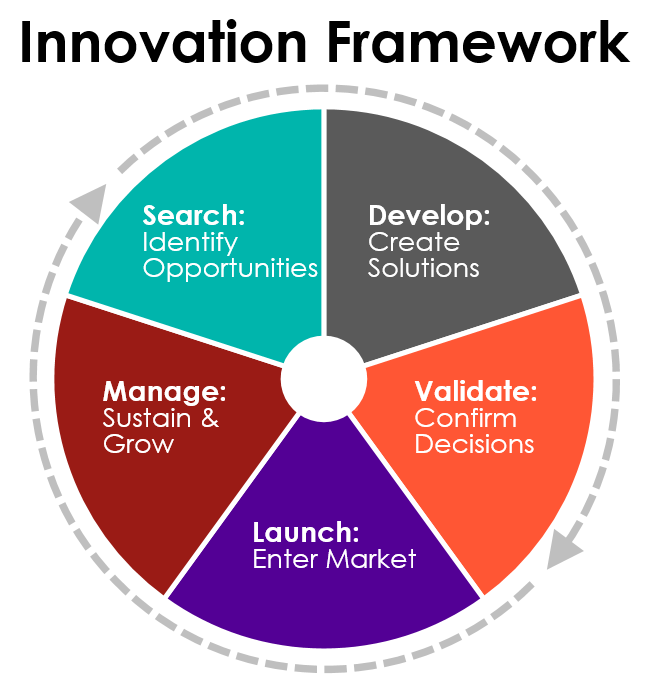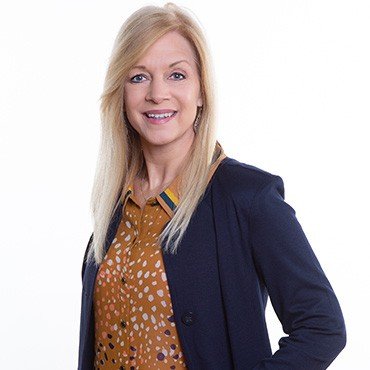
Part Four of Our Five-Part Guide to Successful Innovation
This is the fourth post of a five-part blog series about how businesses can innovate and adjust to market change using a five-phase framework for innovation. We break down one phase per blog, laying out the business challenges that typically align with each phase and the various ways to address them. The first blog explored how to identify areas of opportunities in the Search phase; the second blog, how to generate ideas and develop concepts of relevant solutions in the Develop phase; the third blog, how to determine which concepts are winners, losers or in need of more development in the Validate phase.
At this point in the innovation journey, you should have at least a few innovative concepts that you have validated as winners and are ready to launch. The question is, how do you launch and market your new product or service to give it the best shot at success?

Phase Four of Innovation: Launch—Preparing for Market Entry
The Launch phase is where the rubber meets the road. There is a lot on the line, and it is important you have put all of your resources in the right places for the best shot at success. If you build it, will they come? While Ray Kinsella from Field of Dreams had the ghost of Shoeless Joe Jackson to bring in the fans, you might need multiple promotional strategies—there’s much more to a launch than simply making a product, service or experience available for purchase.
In preparation for going to market, you will need to determine how a new offering should be positioned and supported as well as where and how it should be offered. A successful launch involves crafting the right messaging, placement and pricing. This means fine-tuning the touchpoints between your business and your customers and prospects.
Here are some Launch phase challenges our clients faced and how we helped them improve their go-to-market strategy.
Example #1: Launching a Major League Rugby Team in a Previously Untested US City
Major League Rugby (MLR) is the top tier of competitive, professional rugby in the US, and Atlanta was invited to include a team in the 2020 league expansion. This was exciting, but the new team’s owners had many questions, such as:
- Is there sufficient interest for an Atlanta-based rugby team to draw crowds?
- Where should the team play to give fans easy access?
The team owners brought Escalent on board to conduct a detailed market analysis and provide recommendations to optimize the launch of the new team.
First, we needed to determine the demand for rugby in the region. To do this, we conducted an Atlanta market study to assess the viability of a new MLR team. Constructing the survey with inspiration from previous brand and sponsorship research we have conducted for clients, we evaluated the awareness of and enthusiasm for rugby as a sport. Then, we dove deeper into specific topics such as team name, team colors and stadium location. Most importantly, we collected data that quantitatively predicted the number of avid fans as well as likely television viewership and attendance figures. The owners used the findings as the cornerstone of their launch planning and, in February 2020, Rugby ATL was born. The team played its first game ever against the Utah Warriors at the Life University stadium in North Atlanta and won in a packed arena.
Example #2: Launching a New Brand in an Emerging Market
A cannabidiol (CBD) company was developing a new pharmaceutical-grade product to assist athletes in relieving joint and muscle fatigue and pain. The company turned to Escalent to better understand how consumers perceived its brand, identify areas of opportunity, pinpoint the most effective way to message the product and, at the same time, evaluate initial market feedback on the new product while it was in development.
To create an effective go-to-market strategy and positively position this new CBD brand across current and potential customers, we conducted a quantitative survey to identify where opportunity existed in the marketplace. Interestingly, we discovered targeting athletes was alienating the general market, which was interested in the product but turned off by the athletic focus. We delivered a highly visual report laying out key points for messaging development and future brand extensions. The company used the critical insights we provided to refine its branding and marketing communication for better, more on-target results.
Simply putting a new product or service out into the market does not ensure success. New offerings must be positioned properly to ensure customers and consumers clearly see the value and benefit of what you are providing. While it may feel daunting to consider the resources and investment required to properly test and refine a product launch, a partner like Escalent can help you cut through the noise to create an effective go-to-market strategy.
Next: Now that you have launched your new product or service, you will need to keep up with new market dynamics that come your way. And management will want you to dig into how to grow the business. An agile strategy that will help you sustain and grow your position in the marketplace is critical in the Manage phase.
To learn more about how Escalent can help you innovate, send us a note.









